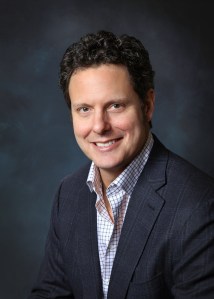Senator Saxby Chambliss is either a blind war hawk or is deliberately misleading the public. Last week, after the National Security Agency had intercepted an al-Qaida conference call plotting attacks against U.S. embassies, Chambliss claimed it was proof that mass surveillance programs were effective. But the AP reports that the NSA’s controversial phone and Internet monitoring programs “played no part in detecting the initial tip.”
The press should have known — and reported on — the fact that Chambliss had a history of hawkish interpretations of intelligence reports after he voted for the Iraq War in 2002. Indeed, the most ardent defenders of the NSA are exactly those members of Congress who wrongly believed we needed to invade Iraq after believing that there was an imminent threat from Saddam Hussein’s Weapons of Mass Destruction.
Since the public can’t scrutinize classified documents, we have to trust that elected representatives are capable of critically evaluating intelligence reports. Anyone who voted for the Iraq War has lost the public’s trust and shouldn’t be allowed to comment on the NSA — without getting hammered by the press and party leaders.
It’s not just Republicans who voted for the Iraq War. “Please know that it is equally frustrating to me, as it is to you, that I cannot provide more detail on the value these programs provide,” said Dianne Feinstein, a member of the Senate Intelligence Committee and one of the NSA’s most ardent supporters. Feinstein argues that NSA surveillance prevented the Najibullah Zazi 2009 New York subway bombing, but public documents reveal that it was local law enforcement that got the first tip during the course of searching his co-conspirators’ computers. Feinstein was wrong about the impending threat of Saddam Hussein in 2002, so why should we believe her now?
Feinstein’s Senate Intelligence Committee colleague, Ron Wyden, who voted against the Iraq War, has seen the exact same intelligence reports on the NSA and concluded there is no evidence mass surveillance was critical to stopping attacks. “I’ve seen zero evidence it is needed,” he tweeted
The press should have known — and reported on — the fact that Chambliss had a history of hawkish interpretations of intelligence reports after he voted for the Iraq War in 2002. Indeed, the most ardent defenders of the NSA are exactly those members of Congress who wrongly believed we needed to invade Iraq after believing that there was an imminent threat from Saddam Hussein’s Weapons of Mass Destruction.
Since the public can’t scrutinize classified documents, we have to trust that elected representatives are capable of critically evaluating intelligence reports. Anyone who voted for the Iraq War has lost the public’s trust and shouldn’t be allowed to comment on the NSA — without getting hammered by the press and party leaders.
It’s not just Republicans who voted for the Iraq War. “Please know that it is equally frustrating to me, as it is to you, that I cannot provide more detail on the value these programs provide,” said Dianne Feinstein, a member of the Senate Intelligence Committee and one of the NSA’s most ardent supporters. Feinstein argues that NSA surveillance prevented the Najibullah Zazi 2009 New York subway bombing, but public documents reveal that it was local law enforcement that got the first tip during the course of searching his co-conspirators’ computers. Feinstein was wrong about the impending threat of Saddam Hussein in 2002, so why should we believe her now?
Feinstein’s Senate Intelligence Committee colleague, Ron Wyden, who voted against the Iraq War, has seen the exact same intelligence reports on the NSA and concluded there is no evidence mass surveillance was critical to stopping attacks. “I’ve seen zero evidence it is needed,” he tweeted
In a public statement, Wyden further argued, “Saying that ‘these programs’ have disrupted ‘dozens of potential terrorist plots’ is misleading if the bulk phone records collection program is actually providing little or no unique value.”
Perhaps we should heed Wyden’s advice. Back in 2002, during the ramp-up to the Iraq War, he wrote:
“First, I am not convinced, regarding a clear and present threat, Saddam Hussein currently imposes a clear and present threat to the domestic security of the Nation. While my service on the Senate Intelligence Committee has left me convinced of Iraq’s support of terrorism, suspicious of its ties to al-Qaida, I have seen no evidence, acts, or involvement in the planning or execution of the vicious attacks of 9/11.”
Voting for or against the Iraq war should have permanent consequences for each member’s reputation, and the press needs to qualify the statements of our elected officials every time they speak on intelligence issues.
Yet, a member’s vote on the Iraq War isn’t completely sufficient for us to trust them, either. Representatives can be influenced as much by personal convictions as the political calculations of re-election.
As a result, two former judges of the court charged with approving NSA requests, The Foreign Intelligence Surveillance Court (FISC), have proposed a “public advocate” — a lawyer specially appointed to defend civil liberties. This independent advocate would be free of both the military hierarchy and the political machinations of Congress. We hope Congress will let this advocate speak to the American people and voice his own confidence in the value of our intelligence systems.
If both an advocate of the people and a critic of the Iraq War saw evidence that the NSA had, indeed, foiled attacks, citizens would have all the confidence they needed to make a more informed choice.
Until then, Feinstein and Chambliss need to step out of the limelight and let someone with credibility talk. And if they dare to keep on talking, the press shouldn’t let them get away with it.
Perhaps we should heed Wyden’s advice. Back in 2002, during the ramp-up to the Iraq War, he wrote:
“First, I am not convinced, regarding a clear and present threat, Saddam Hussein currently imposes a clear and present threat to the domestic security of the Nation. While my service on the Senate Intelligence Committee has left me convinced of Iraq’s support of terrorism, suspicious of its ties to al-Qaida, I have seen no evidence, acts, or involvement in the planning or execution of the vicious attacks of 9/11.”
Voting for or against the Iraq war should have permanent consequences for each member’s reputation, and the press needs to qualify the statements of our elected officials every time they speak on intelligence issues.
Yet, a member’s vote on the Iraq War isn’t completely sufficient for us to trust them, either. Representatives can be influenced as much by personal convictions as the political calculations of re-election.
As a result, two former judges of the court charged with approving NSA requests, The Foreign Intelligence Surveillance Court (FISC), have proposed a “public advocate” — a lawyer specially appointed to defend civil liberties. This independent advocate would be free of both the military hierarchy and the political machinations of Congress. We hope Congress will let this advocate speak to the American people and voice his own confidence in the value of our intelligence systems.
If both an advocate of the people and a critic of the Iraq War saw evidence that the NSA had, indeed, foiled attacks, citizens would have all the confidence they needed to make a more informed choice.
Until then, Feinstein and Chambliss need to step out of the limelight and let someone with credibility talk. And if they dare to keep on talking, the press shouldn’t let them get away with it.




















